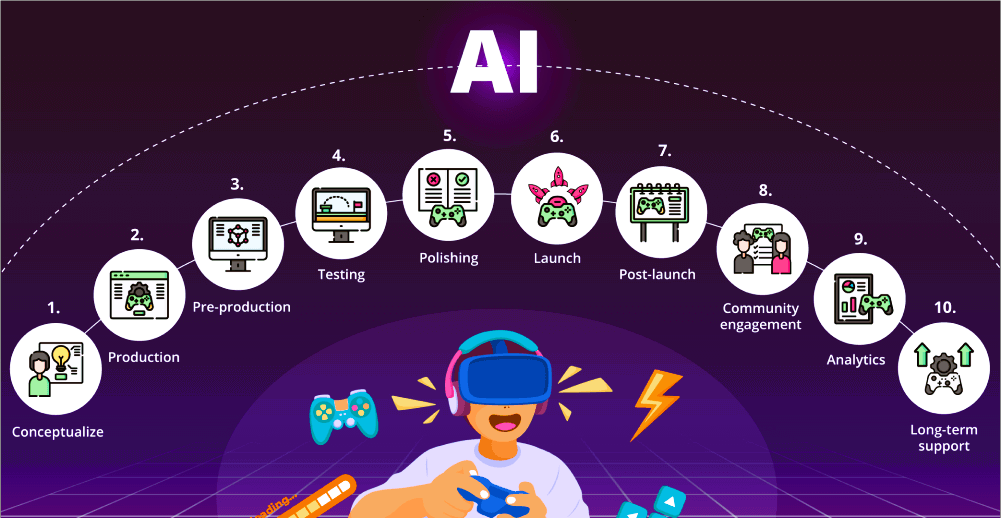In the realm of game development, menus are far more than mere navigational tools; they are integral to the overall player experience. Dynamic and adaptive game menus enhance user interaction by adapting to different contexts and player needs. This comprehensive guide explores key principles and techniques for designing menus that are both flexible and engaging, ensuring a seamless and enjoyable gaming experience.
Understanding Dynamic and Adaptive Menus
Dynamic and adaptive menus refer to interfaces that adjust in real-time based on user input, context, or device capabilities. This adaptability can significantly improve the player experience by providing relevant options and controls that respond to various conditions.
- Dynamic Menus: These menus change based on user actions or game state. For example, a dynamic menu might display different options based on the player’s progress or achievements.
- Adaptive Menus: These menus adjust to different devices, screen sizes, or input methods. An adaptive menu ensures that the interface remains functional and visually appealing across various platforms, from consoles to mobile devices.
Key Principles for Designing Dynamic Menus

To create effective dynamic menus, developers should focus on several core principles:
Contextual Relevance
Menus should adapt to the context of the game and the player’s current situation. For instance:
- Progress-Based Options: Display different menu options based on the player’s progress in the game. This ensures that players only see relevant options and avoid confusion.
- In-Game Context: Adjust the menu options based on in-game events or conditions. For example, a menu might offer different settings or items depending on the player’s location or current quest.
User-Friendly Navigation
Effective navigation is crucial for a positive user experience. Dynamic menus should:
- Provide Clear Paths: Ensure that menu navigation is intuitive and easy to follow. Use familiar icons and labels to guide players through different options.
- Minimize Clicks: Reduce the number of actions required to access key features. Implement shortcuts or quick access options to streamline navigation.
Real-Time Feedback
Dynamic menus should offer real-time feedback to players, helping them understand the impact of their actions. This can include:
- Visual Cues: Use animations or highlights to indicate selected options or changes in the menu. This helps players quickly identify their choices and confirm actions.
- Interactive Elements: Incorporate interactive elements that respond to player input, such as hover effects or dynamic updates based on user interactions. Did you like the article? Read also about Innovative Design Trends.
Techniques for Creating Adaptive Menus
Adaptive menus must be designed to function seamlessly across various devices and screen sizes. Key techniques include:
Responsive Design
Implement responsive design principles to ensure that menus adjust to different screen resolutions and aspect ratios:
- Flexible Layouts: Use flexible layouts that resize and reposition elements based on the available screen space. This can include fluid grids or scalable vector graphics (SVGs).
- Adaptive Elements: Design menu elements that adapt to different input methods, such as touchscreens or controllers. Ensure that buttons and controls are appropriately sized and spaced for ease of use.
Cross-Platform Consistency
Maintain consistency in menu design across different platforms while adapting to each device’s unique features:
- Unified Design Language: Use a consistent design language across platforms to reinforce the game’s identity. This includes color schemes, typography, and iconography.
- Platform-Specific Adjustments: Make necessary adjustments for platform-specific features, such as touch gestures for mobile devices or extended controls for consoles.
Testing and Optimization
Thorough testing is essential for ensuring that adaptive menus function correctly across various devices and scenarios:
- Device Testing: Test menus on a range of devices to identify any issues with layout, responsiveness, or functionality. This includes testing on different screen sizes, resolutions, and input methods.
- User Feedback: Gather feedback from players to understand their experiences with the menu system. Use this feedback to make iterative improvements and address any usability concerns.
Examples of Effective Dynamic and Adaptive Menus

Examining successful examples can provide valuable insights into effective menu design. Games like “The Elder Scrolls V: Skyrim” and “Fortnite” feature dynamic and adaptive menus that enhance user experience through contextual options and responsive design. Analyzing these examples can help developers understand how to implement similar features in their own games.
Best Practices for Menu Design
To create dynamic and adaptive menus that enhance the player experience, consider the following best practices:
Keep It Simple
Avoid overly complex menu structures. Focus on simplicity and clarity to ensure that players can easily navigate and access the options they need.
Prioritize Accessibility
Design menus with accessibility in mind, ensuring that they are usable by players with varying abilities. This includes providing options for different input methods and ensuring that text and icons are legible.
Maintain Consistency
Ensure consistency in menu design to provide a cohesive user experience. Consistent visual elements and navigation patterns help players become familiar with the menu system and reduce confusion.
Creating dynamic and adaptive game menus requires a thoughtful approach to design, focusing on contextual relevance, user-friendly navigation, and real-time feedback. By implementing responsive design principles and maintaining cross-platform consistency, developers can create menus that enhance the player experience and adapt to various devices and scenarios.
For additional information on design standards and guidelines, you can explore Wikipedia’s User Interface Design Guidelines. This resource offers valuable insights into established practices and emerging trends in UI design, which can further guide your menu development process.
By applying these principles and techniques, game developers can craft menus that not only meet the needs of players but also contribute to a more engaging and enjoyable gaming experience.




